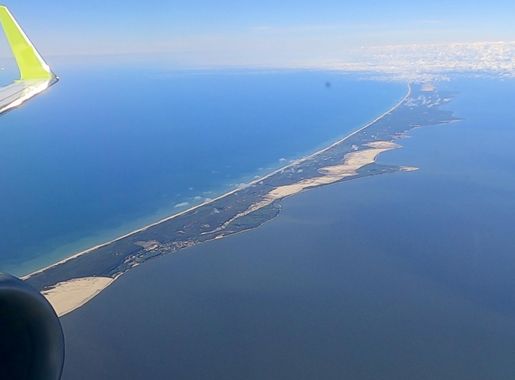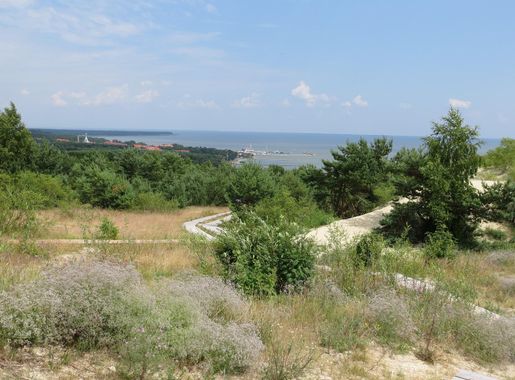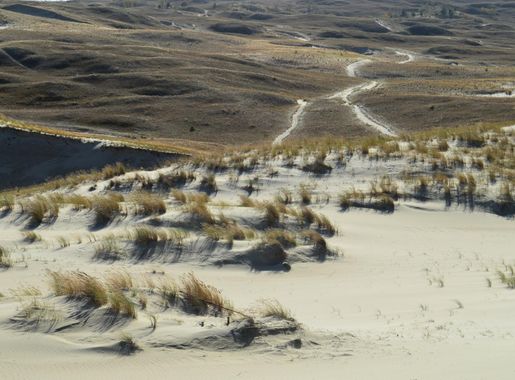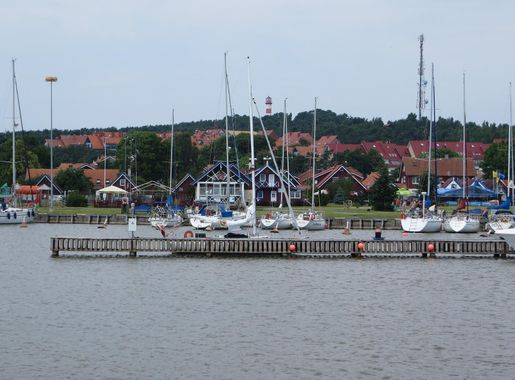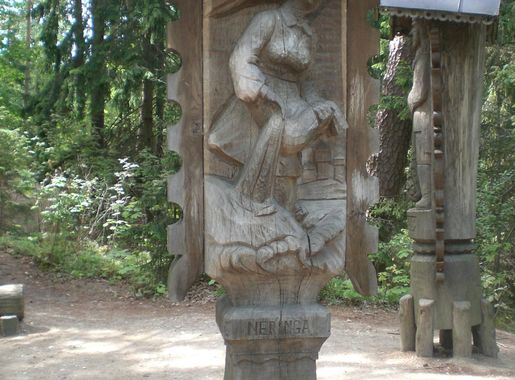
Curonian Spit National Park: A Baltic Jewel
Discover the Curonian Spit National Park in Lithuania: A UNESCO World Heritage site with stunning dunes, rich biodiversity, and charming fishing villages.
Curonian Spit National Park, located in Lithuania, is a unique and breathtaking destination that offers visitors a blend of stunning natural landscapes and rich cultural heritage. This UNESCO World Heritage site stretches for 98 kilometers, with the Lithuanian portion covering about 52 kilometers. The spit separates the Curonian Lagoon from the Baltic Sea, creating a peaceful yet dynamic environment that is perfect for nature lovers and history enthusiasts alike. The park is renowned for its shifting sand dunes, some of the highest in Europe, which provide a mesmerizing backdrop for hiking and photography. Visitors can explore the lush pine forests, unique to this region, and discover a diverse range of flora and fauna. Birdwatchers will find the Curonian Spit a paradise, especially during the migratory seasons when thousands of birds pass through the area. In addition to its natural beauty, the Curonian Spit is dotted with charming fishing villages, each with its own unique character and historical significance. Nida, one of the most popular villages, offers a glimpse into the traditional way of life and boasts several museums, including the Thomas Mann Museum. The local culture and traditions, deeply rooted in the area’s history, provide an enriching experience for all visitors.
Local tips in Curonian Spit National Park
- Visit during the off-peak season to avoid crowds and enjoy a more tranquil experience.
- Rent a bike to explore the park’s many trails and take in the beautiful scenery at your own pace.
- Don’t miss the Parnidis Dune near Nida for a breathtaking panoramic view of the entire spit.
- Check out the local museums in Nida to learn more about the cultural and historical significance of the area.
- Pack a picnic and enjoy a meal on the beach, but be sure to clean up to help preserve the park’s natural beauty.
Curonian Spit National Park: A Baltic Jewel
Curonian Spit National Park, located in Lithuania, is a unique and breathtaking destination that offers visitors a blend of stunning natural landscapes and rich cultural heritage. This UNESCO World Heritage site stretches for 98 kilometers, with the Lithuanian portion covering about 52 kilometers. The spit separates the Curonian Lagoon from the Baltic Sea, creating a peaceful yet dynamic environment that is perfect for nature lovers and history enthusiasts alike. The park is renowned for its shifting sand dunes, some of the highest in Europe, which provide a mesmerizing backdrop for hiking and photography. Visitors can explore the lush pine forests, unique to this region, and discover a diverse range of flora and fauna. Birdwatchers will find the Curonian Spit a paradise, especially during the migratory seasons when thousands of birds pass through the area. In addition to its natural beauty, the Curonian Spit is dotted with charming fishing villages, each with its own unique character and historical significance. Nida, one of the most popular villages, offers a glimpse into the traditional way of life and boasts several museums, including the Thomas Mann Museum. The local culture and traditions, deeply rooted in the area’s history, provide an enriching experience for all visitors.
When is the best time to go to Curonian Spit National Park?
Iconic landmarks you can’t miss
The Dead Dunes
Explore the stunning Dead Dunes in Neringa Municipality, a UNESCO World Heritage Site known for its breathtaking landscapes and rich cultural history.
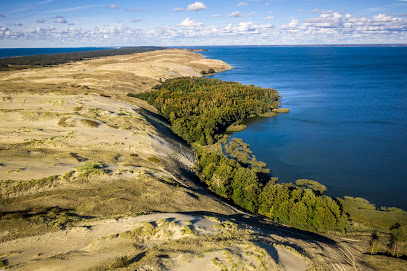
Nemunas Loops Regional Park
Discover the enchanting landscapes and rich biodiversity of Nemunas Loops Regional Park, a serene escape in Lithuania for nature lovers and adventure seekers.
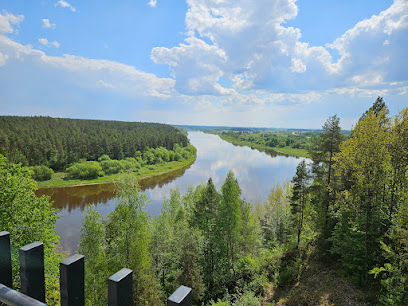
Nida Lighthouse
Discover the Nida Lighthouse: A historical gem offering stunning views of the Baltic Sea and the unique landscapes of the Curonian Spit.
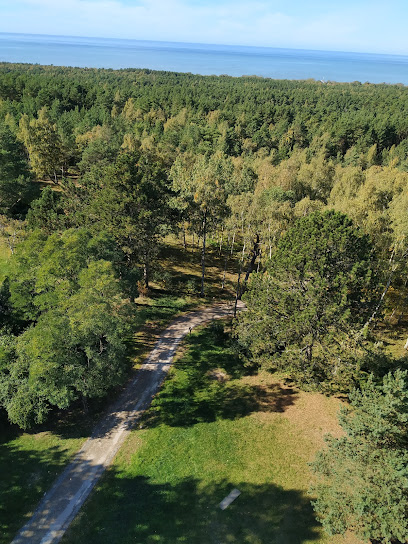
Juodkrantė Colony of Grey Herons and Great Cormorants
Experience the beauty of nature at the Juodkrantė Colony of Grey Herons and Great Cormorants, a prime birdwatching destination in Lithuania's Neringa Municipality.
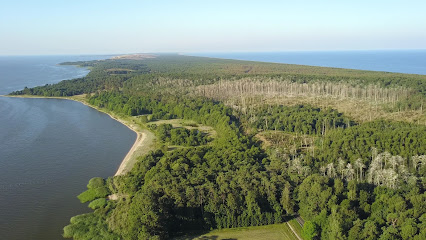
Vecekrug Dune
Discover the breathtaking beauty of Vecekrug Dune, a stunning nature preserve in Neringa Municipality, perfect for nature lovers and adventure seekers.
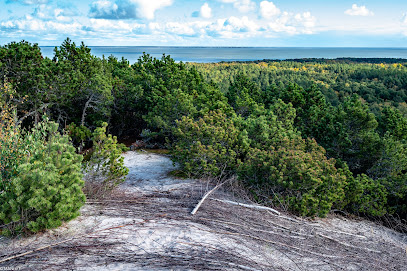
Curonian Spit
Experience the breathtaking landscapes and rich cultural heritage of the Curonian Spit, a UNESCO World Heritage site in Kaliningrad Oblast, Russia.
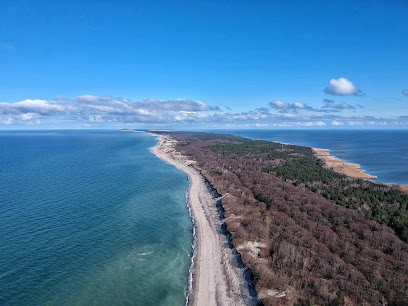
Curonian Spit History Museum
Explore the Curonian Spit History Museum to uncover the fascinating natural and cultural heritage of this UNESCO World Heritage Site in Lithuania.
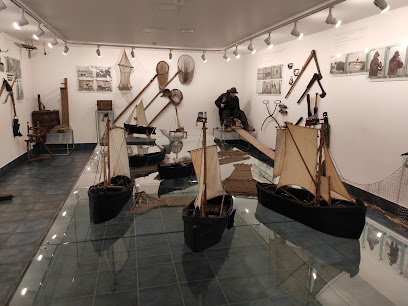
Unmissable attractions to see
Cape of Ventė Lighthouse
Explore the historic Cape of Ventė Lighthouse, a stunning landmark offering breathtaking views and rich maritime heritage along the Lithuanian coastline.
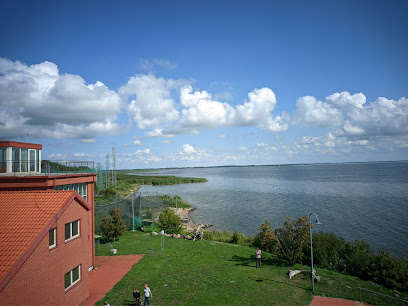
Vysota Efa
Experience the breathtaking beauty of Vysota Efa, a premier hiking destination in Morskoe, Kaliningrad Oblast, perfect for nature lovers and adventurers.
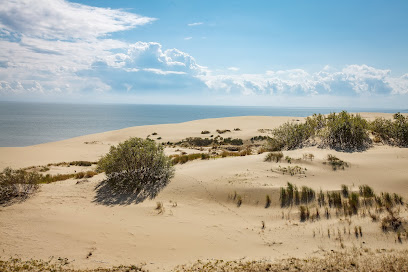
Sundial
Discover the artistic beauty and celestial precision of the Sundial in Neringa, a must-see tourist attraction blending nature and culture seamlessly.
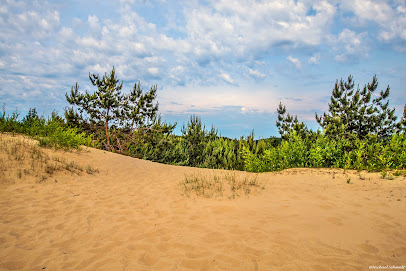
Nida Lighthouse
Discover the Nida Lighthouse, a historical gem offering breathtaking views of the Curonian Spit and Baltic Sea, blending culture and nature in perfect harmony.
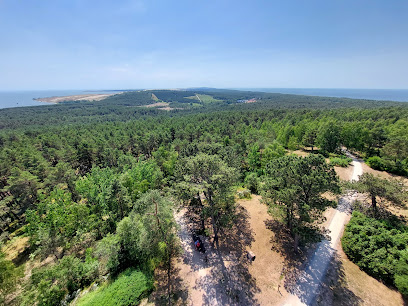
Uostadvaris Lighthouse
Explore the stunning Uostadvaris Lighthouse, a historical gem on the Lithuanian coast, offering breathtaking views and rich maritime heritage.
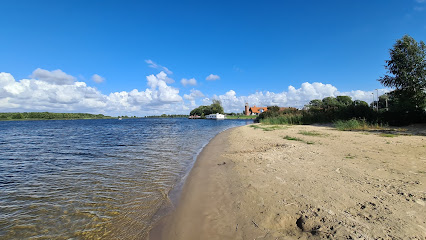
Vecekrug Dune
Explore Vecekrug Dune, a breathtaking nature preserve in Neringa Municipality, showcasing stunning landscapes and diverse ecosystems for nature lovers.
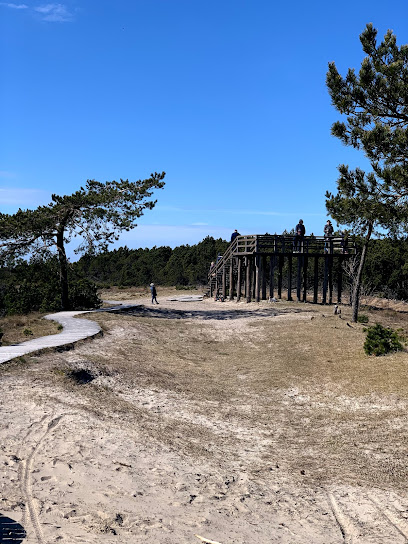
Parnidis Educational Track
Explore the stunning landscapes of Parnidis Educational Track in Neringa Municipality, a perfect hiking destination for nature lovers and outdoor enthusiasts.
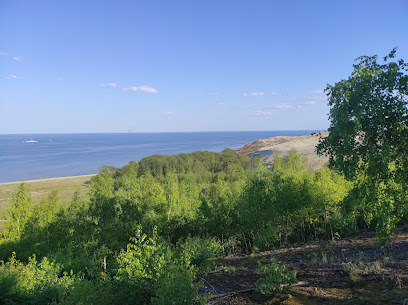
Park
Explore Neringa National Park, a UNESCO World Heritage site in Lithuania, known for its stunning landscapes, diverse wildlife, and rich cultural heritage.
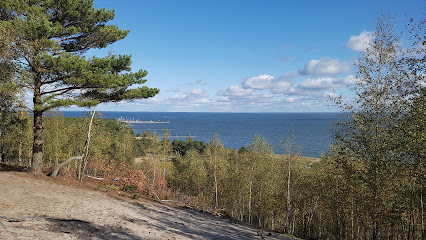
Nida Fisherman's Ethnographic Homestead
Explore the rich maritime heritage at Nida Fisherman's Ethnographic Homestead, where tradition and nature unite in a stunning coastal setting.
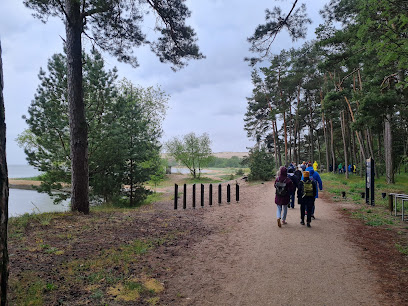
King Wilhelm's Canal
Explore the natural beauty and tranquility of King Wilhelm's Canal in Klaipėda District, a perfect destination for relaxation and scenic adventures.

Valley of Death
Discover the breathtaking beauty and rich history of the Valley of Death in Neringa Municipality, a must-visit tourist attraction in Lithuania.
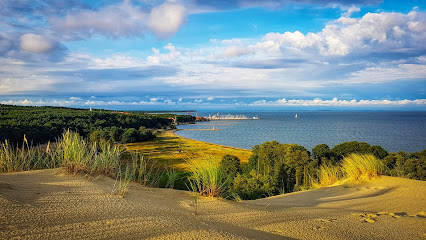
Ef Dune
Experience the breathtaking natural beauty of Ef Dune in Kaliningrad Oblast, a serene coastal attraction perfect for nature lovers and adventure seekers.
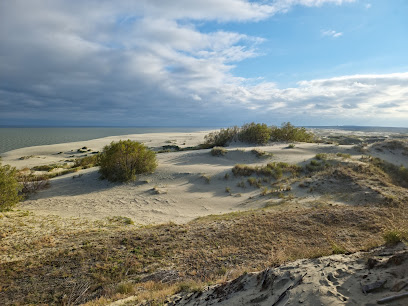
Lighthouse of the Cape of Horses
Explore the stunning Lighthouse of the Cape of Horses in Neringa, a historical landmark offering breathtaking coastal views and rich maritime history.
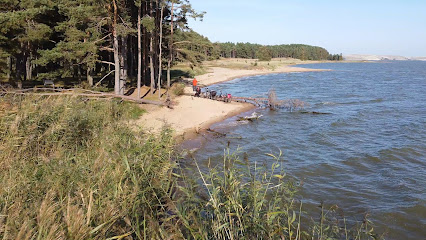
Juodkrantė Lighthouse
Discover the historic Juodkrantė Lighthouse, a stunning coastal landmark offering breathtaking views and a glimpse into Lithuania's maritime heritage.
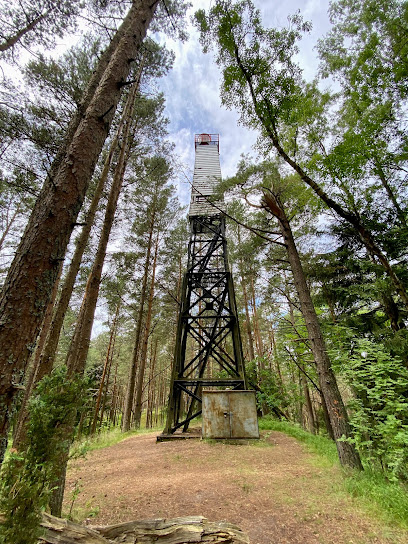
Stone Sculpture Park
Explore the enchanting Stone Sculpture Park in Juodkrantė, a perfect blend of art and nature in the heart of Neringa Municipality.

Essential places to dine
Floros Simfonija
Experience exquisite dining at Floros Simfonija in Palanga—where local flavors meet modern culinary art in a beautiful setting.
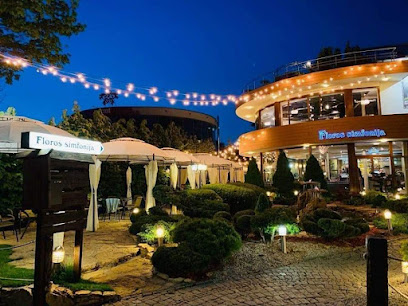
Kavinė Klaipėdos Senamiestis
Experience authentic Lithuanian cuisine at Kavinė Klaipėdos Senamiestis, where every dish tells a story in the heart of Klaipėda.

KURŠIS, kavinė-baras, Gražinos Starkuvienės firma
Discover KURŠIS in Nida – where local flavors meet cozy ambiance for an unforgettable dining experience.
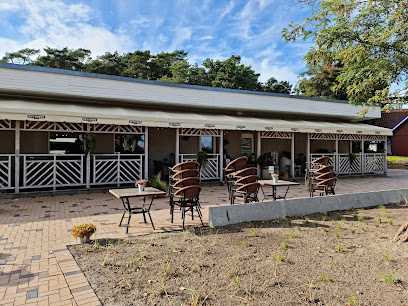
ETNO DVARAS
Experience authentic Lithuanian flavors at ETNO DVARAS in Klaipėda—where tradition meets taste in every dish.
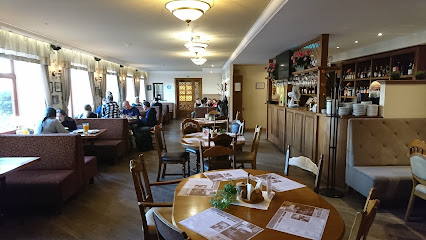
Katpėdėlė
Discover the culinary delights at Katpėdėlė - where local flavors meet international flair in Klaipėda's vibrant dining scene.
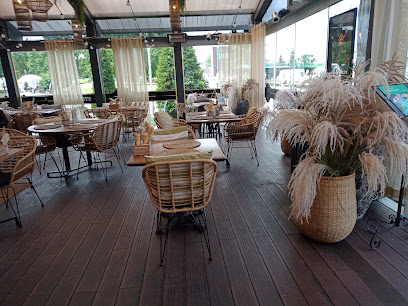
monai
Discover Monai: A premier restaurant in Klaipeda offering exquisite dishes and an elegant atmosphere for an unforgettable dining experience.
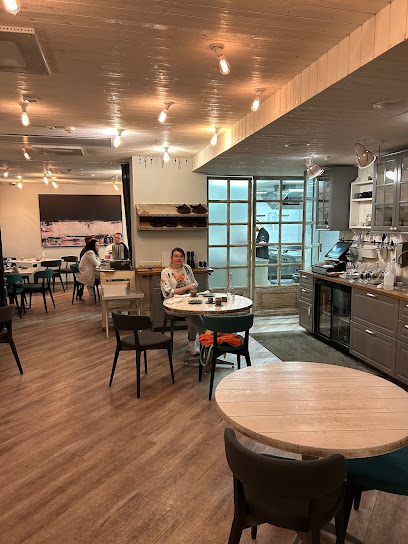
Gaisrinė | Restobaras
Experience culinary excellence at Gaisrinė Restobaras in Klaipėda, where local flavors meet modern dining in a vibrant atmosphere.
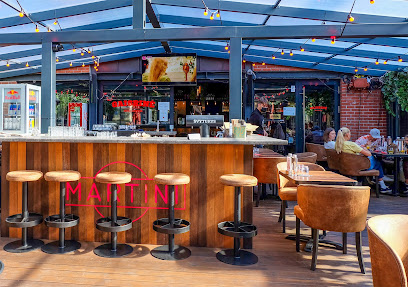
Momo Grill
Discover Momo Grill in Klaipėda - where exquisite grilling meets vibrant atmosphere for an unforgettable dining adventure.
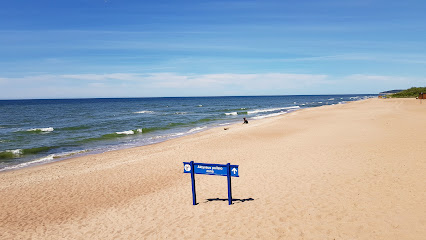
Ertlio Namas
Experience authentic Lithuanian cuisine at Ertlio Namas, where tradition meets modern culinary artistry in Vilnius.
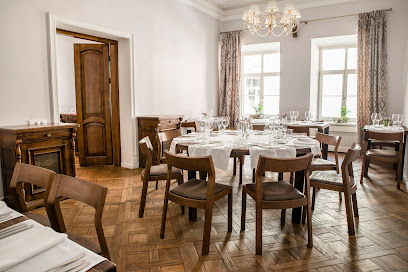
„Monte Pacis“
Experience the best of Lithuanian cuisine and vibrant cultural events at Monte Pacis in Kaunas.
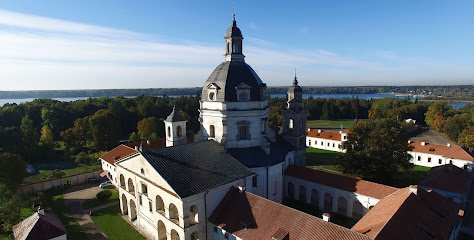
Ararat All Suites Hotel & Restaurant
Discover luxury and fine dining at Ararat All Suites Hotel & Restaurant in Klaipėda—your gateway to unforgettable experiences.
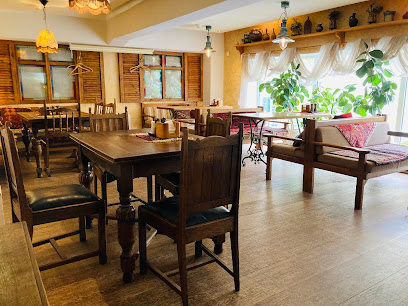
Olando kepurė
Experience authentic Lithuanian cuisine at Olando Kepurė while enjoying nature's beauty in Karklė's serene landscapes.
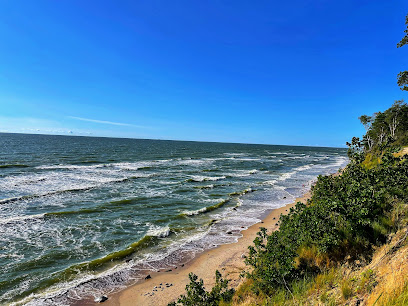
Tik pas Joną
Discover authentic Lithuanian cuisine at Tik pas Joną in Nida—where local flavors meet warm hospitality.
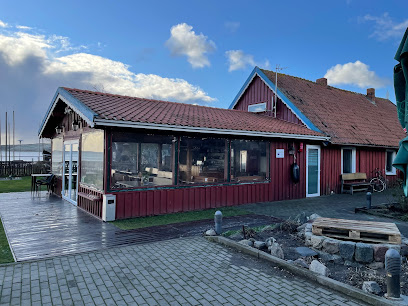
Nerija
Discover authentic Lithuanian cuisine at Nerija, where local flavors meet warm hospitality in the heart of Klaipėda.
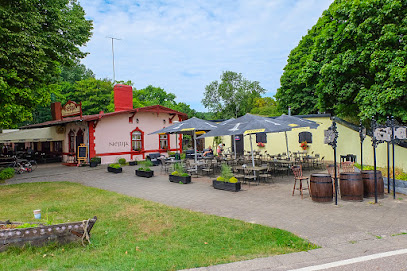
Nidos prieplauka
Experience authentic Lithuanian cuisine at Nidos prieplauka, where delicious meals meet stunning coastal views in beautiful Nida.
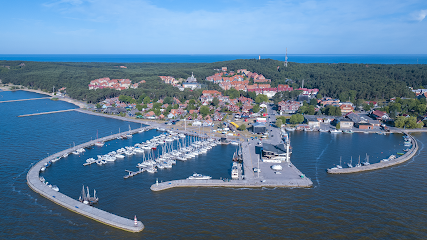
Markets, malls and hidden boutiques
Curonian Spit National Park
Explore the breathtaking beauty and cultural richness of Curonian Spit National Park, a UNESCO World Heritage site in Lithuania.
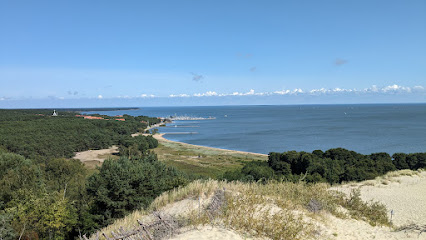
Maxima
Discover Maxima in Nida for a comprehensive selection of groceries and local specialties, enhancing your travel experience in beautiful Lithuania.
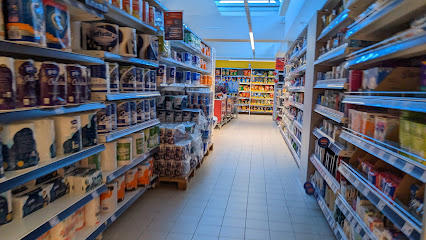
Gintarinis pelekas (rūkyta žuvis)
Discover the authentic taste of Lithuania at Gintarinis Pelekas, the ultimate destination for exquisite smoked fish in Mockiai.

Avikalnis Observation Deck
Discover sweeping views of the Baltic Sea and Curonian Lagoon from the Avikalnis Observation Deck, a serene retreat in Neringa's natural beauty.
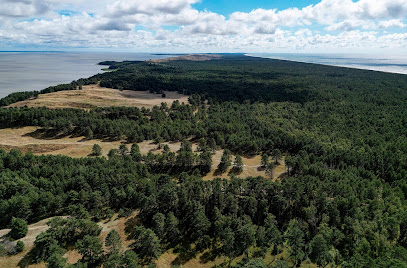
Ingos rūkyklėlė Rūkytos žuvies krautuvėlė (Smoked fish shop)
Discover the authentic taste of Lithuania at Ingos rūkyklėlė, the premier smoked fish shop in Rusnė, offering a delightful selection of local delicacies.
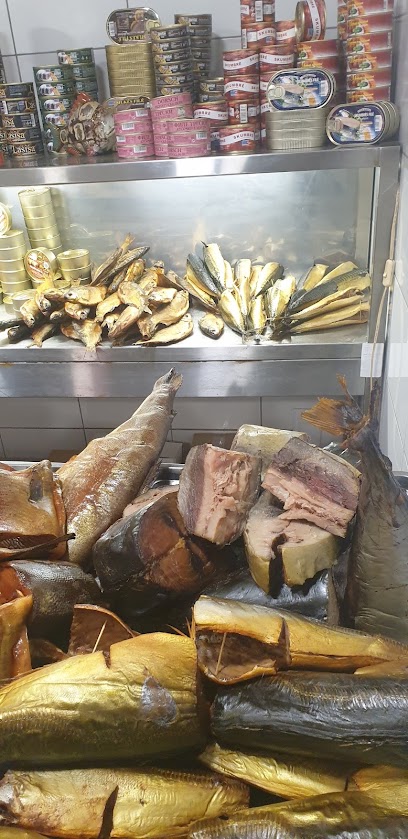
Pervalka Shop
Explore Pervalka Shop: Your destination for unique local crafts and delightful souvenirs in the heart of Neringa, Lithuania.
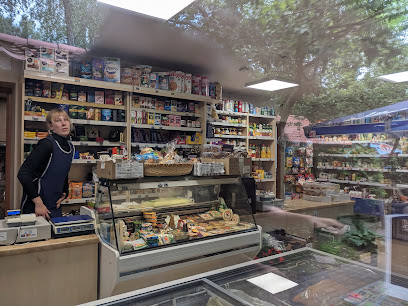
Pc Kopa
Discover the best shopping experience in Juodkrantė at Pc Kopa, where local flavors meet modern retail in a vibrant atmosphere.

Convenience store
Explore Juodkrantė's convenience store for local snacks and essentials, perfect for your adventures in Neringa Municipality.
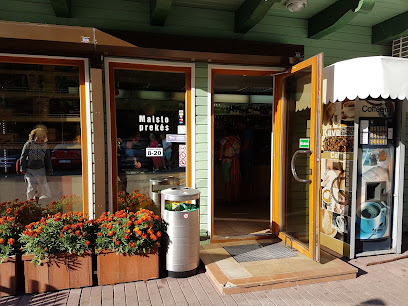
Olego ŽUVIS
Discover the freshest seafood at Olego ŽUVIS in Juodkrantė, a culinary treasure showcasing the best of the Baltic Sea.
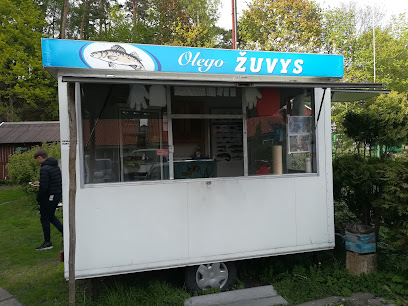
Opakopa
Explore Opakopa in Nida for stylish children's clothing and unique toys, making family shopping a delightful experience on your travels.

Smagios Dovanos
Explore the charm of Klaipėda at Smagios Dovanos, your go-to gift shop for unique souvenirs and local treasures.
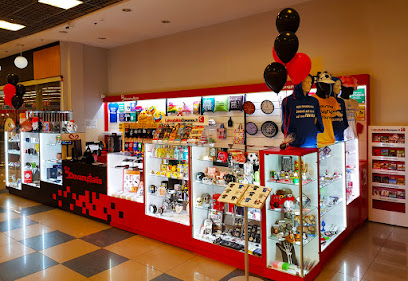
Vai Nai Namai - riešutų, dovanų ir vyno parduotuvė.
Discover the charm of Vai Nai Namai, a gift shop in Klaipėda offering unique Lithuanian gifts and health foods, including exclusive wines.
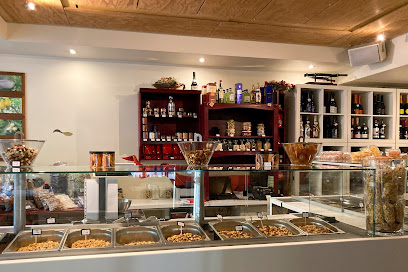
Op! originalios prekės
Explore Op! Originalios Prekės, a charming gift shop in Klaipėda offering unique Lithuanian souvenirs and artistic creations.

Ice Dunes hand made ice-cream (Gelato)
Experience the joy of handmade gelato at Ice Dunes, a delightful ice cream shop in the scenic town of Nida, perfect for sweet indulgence.
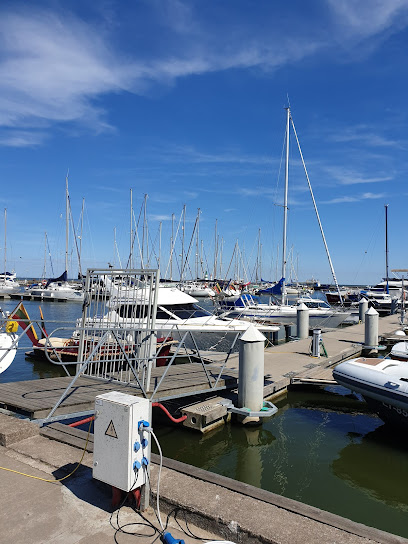
Żuvis
Explore Żuvis in Juodkrantė, where vibrant tropical fish come alive in a captivating shopping experience amidst Neringa's natural beauty.
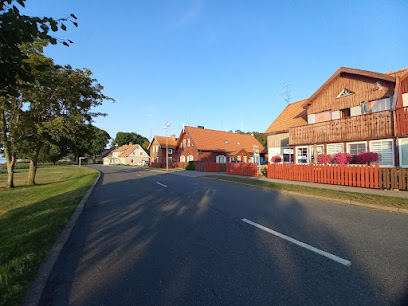
Essential bars & hidden hideouts
KURŠIS, kavinė-baras, Gražinos Starkuvienės firma
Discover the flavors of Lithuania at KURŠIS, a cozy café-bar in Nida offering fresh, local dishes and a warm, inviting atmosphere.
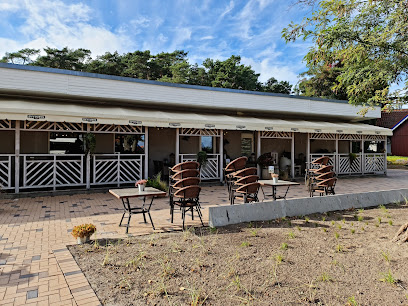
Baras Rasãlas
Experience the heart of Klaipėda's nightlife at Baras Rasãlas, where local craft beers and sports come together in a vibrant atmosphere.
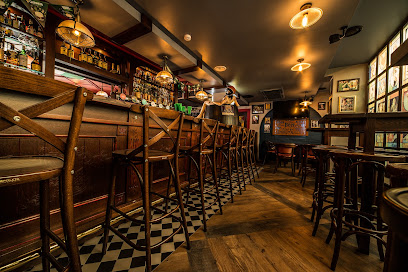
Tik pas Joną
Experience the rich flavors of Lithuanian cuisine at Tik pas Joną, a must-visit restaurant in the seaside town of Nida, known for its fresh seafood and warm atmosphere.
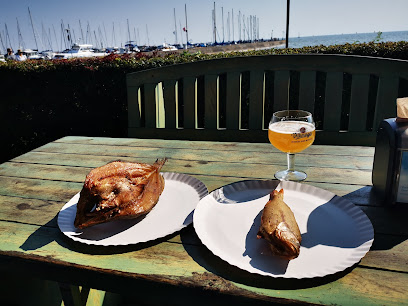
Smiltynė Rescue Station Bar
Experience the charm of Smiltynė Rescue Station Bar in Klaipėda, where stunning views meet refreshing drinks in a cozy setting.
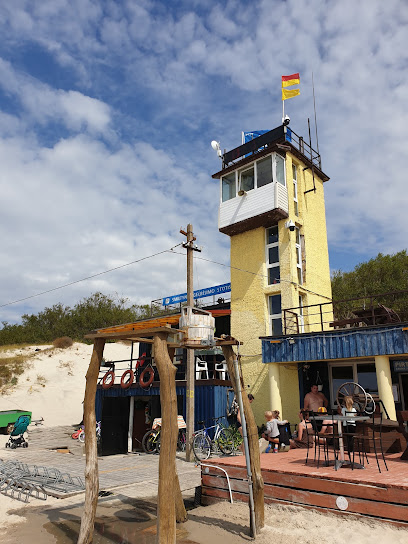
Nidos prieplauka
Experience the culinary treasures of Nida at Nidos prieplauka, where fresh seafood meets stunning coastal views in a cozy dining atmosphere.
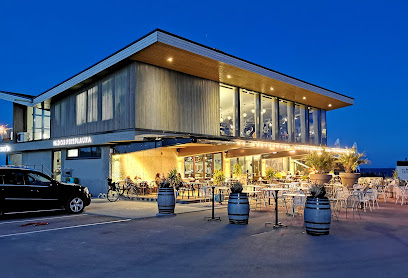
Varna. Terasa
Discover Varna Terasa, a culinary delight in Nida offering fresh local dishes and stunning views for an unforgettable dining experience.
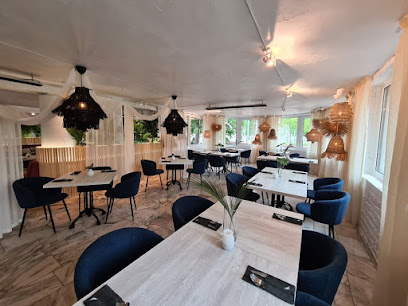
Sakutis
Experience the culinary delights of Sakutis in Nida, where local flavors and warm hospitality create an unforgettable dining experience.
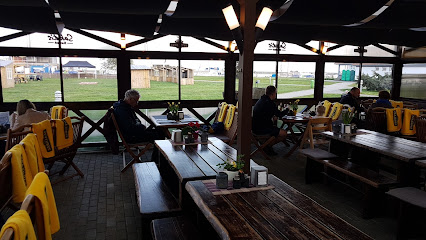
Rory pub Klaipėda
Discover Rory Pub in Klaipėda: A lively bar offering a vibrant mix of local culture, delicious drinks, and hearty pub fare.
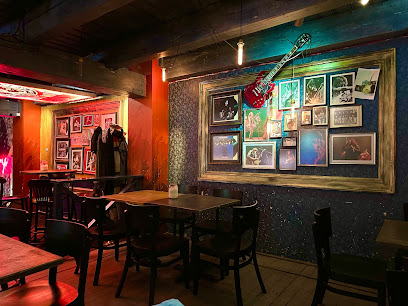
Kurpiai
Discover Kurpiai in Klaipėda, where exceptional jazz music meets exquisite dining in a cozy, inviting atmosphere.
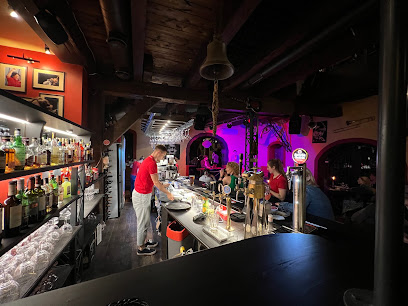
Kanpai sušiai Nidoje
Experience the best sushi in Nida, where fresh ingredients and authentic Japanese flavors come together for an unforgettable dining experience.

Achtung Baby
Experience the charm of Achtung Baby, a wine bar in Klaipėda, offering a refined selection of wines and a cozy ambiance for all wine lovers.
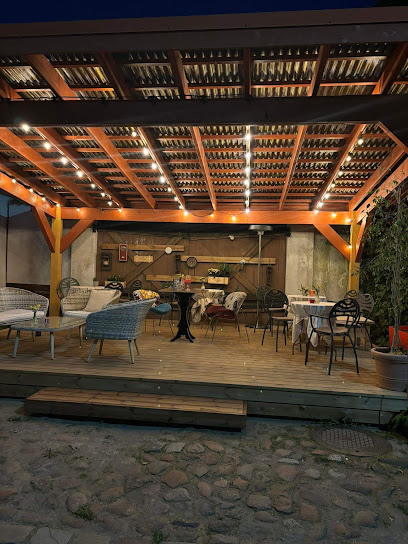
Grill House'as
Experience the flavors of Lithuania at Grill House'as, a cozy restaurant in Nida offering grilled specialties and stunning coastal views.
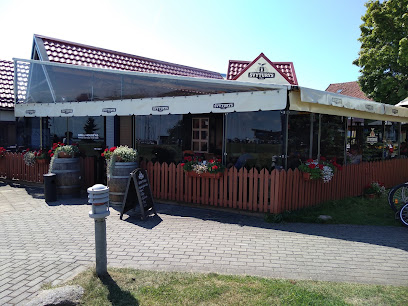
Sangrita Nida
Discover the vibrant nightlife at Sangrita Nida, where delightful cocktails and a lively atmosphere await in the heart of Nida.
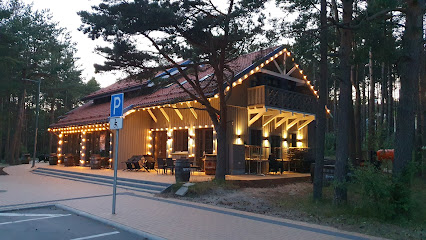
Genys Garden Nida
Experience the charm of Genys Garden Nida, a vibrant beer garden in Lithuania, where local brews and enchanting ambiance come together.
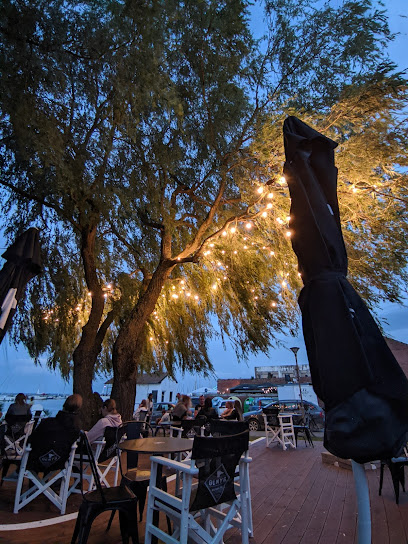
Beer pub
Discover the vibrant beer culture of Klaipėda with a diverse selection of local and international brews in a cozy, inviting pub atmosphere.
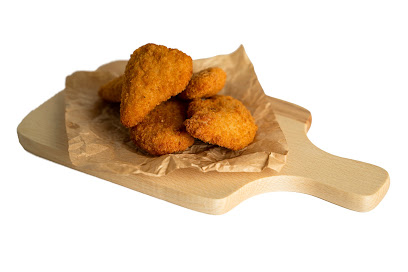
Local Phrases about Curonian Spit National Park
-
- HelloLabas
[lah-bahs] - GoodbyeViso gero
[vee-soh geh-roh] - YesTaip
[taip] - NoNe
[neh] - Please/You're welcomePrašau
[prah-sau] - Thank youAčiū
[ah-choo] - Excuse me/SorryAtsiprašau
[aht-see-prah-sau] - How are you?Kaip sekasi?
[kai-p seh-kah-see] - Fine. And you?Gerai. O jūs?
[geh-rai. oh yoo-s] - Do you speak English?Ar kalbate angliškai?
[ahr kahl-bah-teh ahng-leesh-kai] - I don't understandAš nesuprantu
[ahsh neh-soo-prahn-too]
- HelloLabas
-
- I'd like to see the menu, pleaseNorėčiau pamatyti meniu, prašau
[noh-reh-chiau pah-mah-ti meh-nyoo, prah-sau] - I don't eat meatAš nevalgau mėsos
[ahsh neh-vahl-gau meh-sohs] - Cheers!Į sveikatą!
[ee svee-kah-tah] - I would like to pay, pleaseNorėčiau sumokėti, prašau
[noh-reh-chiau soo-moh-keh-tee, prah-sau]
- I'd like to see the menu, pleaseNorėčiau pamatyti meniu, prašau
-
- Help!Pagalba!
[pah-gahl-bah] - Go away!Išeik!
[ee-sheik] - Call the Police!Skambinkite policiją!
[skahm-bihn-kee-teh poh-lee-tsiah] - Call a doctor!Skambinkite gydytoją!
[skahm-bihn-kee-teh geh-dih-toh-yah] - I'm lostPamestas
[pah-meh-stahs] - I'm illAš sergu
[ahsh sehr-goo]
- Help!Pagalba!
-
- I'd like to buy...Norėčiau nusipirkti...
[noh-reh-chiau noo-see-peerk-tee] - I'm just lookingAš tik žiūrinėju
[ahsh teek zhyoo-ree-neh-yoo] - How much is it?Kiek tai kainuoja?
[kyek tai kai-noo-yah] - That's too expensiveTai per brangu
[tai pehr brahn-goo] - Can you lower the price?Ar galite sumažinti kainą?
[ahr gah-lee-teh soo-mah-zihn-tee kai-nah]
- I'd like to buy...Norėčiau nusipirkti...
-
- What time is it?Kiek laikas?
[kyek lai-kahs] - It's one o'clockViena valanda
[vyeh-nah vah-lahn-dah] - Half past (10)Dešimt po pusės
[deh-shimt poh poo-sehs] - MorningRytas
[rih-tahs] - AfternoonPopietė
[poh-pyeh-teh] - EveningVakaras
[vah-kah-rahs] - YesterdayVakar
[vah-kahr] - TodayŠiandien
[shahn-dyehn] - TomorrowRytoj
[rih-toi] - 1Vienas
[vyeh-nahs] - 2Du
[doo] - 3Trys
[treese] - 4Keturi
[keh-too-ree] - 5Penki
[pehn-kee] - 6Šeši
[sheh-shi] - 7Septyni
[sehp-tih-nee] - 8Aštuoni
[ahs-too-oh-nee] - 9Devyni
[deh-vih-nee] - 10Dešimt
[deh-shimt]
- What time is it?Kiek laikas?
-
- Where's a/the...?Kur yra/ yra...
[koor yrah/ yrah] - What's the address?Koks adresas?
[kohks ah-dreh-sahs] - Can you show me (on the map)?Ar galite man parodyti (žemėlapyje)?
[ahr gah-lee-teh mahn poh-roh-di-tee (zhe-meh-lah-pyeh)] - When's the next (bus)?Kada bus kitas (autobusas)?
[kah-dah boos kee-tahs (ow-toh-boo-sahs)] - A ticket (to ....)Bilietas (į ....)
[bee-lyeh-tahs (ee)]
- Where's a/the...?Kur yra/ yra...
History of Curonian Spit National Park
-
The Curonian Spit, a narrow sandy peninsula separating the Curonian Lagoon from the Baltic Sea, was formed approximately 5,000 years ago due to the interplay of marine and aeolian processes. The unique landform stretches for about 98 kilometers, of which 52 kilometers are in Lithuania, and the remaining portion is in Russia's Kaliningrad Oblast.
-
Archaeological evidence suggests that the Curonian Spit has been inhabited since prehistoric times. Early inhabitants included the Curonians, a Baltic tribe known for their seafaring skills, who left behind burial mounds and other artifacts. The remains of ancient fishing villages and settlements can still be found, offering a glimpse into the lives of the early residents.
-
During the medieval period, the Curonian Spit was part of the territory controlled by the Teutonic Knights. They built forts and castles to protect the area from invasions and to control the strategic trading routes. The ruins of some of these fortifications still stand today, serving as a testament to the region's turbulent past.
-
In the 16th and 17th centuries, the Curonian Spit became a hub for fishing communities. Villages such as Nida, Juodkrantė, and Pervalka were established, and the local inhabitants relied heavily on fishing and amber gathering. These villages have retained much of their historical charm and traditional wooden architecture.
-
The Curonian Spit is renowned for its impressive sand dunes, some of which reach heights of up to 60 meters. Throughout history, these shifting sands have posed both a natural wonder and a threat to local settlements. Efforts to stabilize the dunes began in the 19th century, with reforestation and other measures to prevent sand encroachment on villages.
-
The Curonian Spit was under German control for significant periods, especially during the 19th and early 20th centuries. The area was a popular destination for German artists and intellectuals. During World War II, the Spit witnessed military activity and was part of the Eastern Front. Many of the buildings and infrastructure from this period reflect the German architectural influence.
-
After World War II, the Curonian Spit became part of the Lithuanian Soviet Socialist Republic. During the Soviet era, the Spit was developed as a recreational area, and some of the traditional fishing practices were replaced with tourism-related activities. The period also saw the construction of new infrastructure, including roads and holiday resorts.
-
In 2000, the Curonian Spit was designated as a UNESCO World Heritage Site, recognizing its unique natural and cultural landscape. The designation has helped to preserve the area's ecological integrity and promote sustainable tourism, ensuring that future generations can continue to appreciate its beauty and history.
Curonian Spit National Park Essentials
-
Curonian Spit National Park is accessible from both Lithuania and Russia. The nearest airport on the Lithuanian side is Palanga International Airport, approximately 50 kilometers away from the park. From the airport, you can take a bus or taxi to Klaipėda, where you can catch a ferry to Smiltynė, the gateway to the Curonian Spit. Alternatively, you can drive to Klaipėda and take your car on the ferry. If you are coming from Russia, the nearest airport is Khrabrovo Airport in Kaliningrad. From Kaliningrad, you can drive to the Curonian Spit border crossing at Morskoe-Nida.
-
Within the Curonian Spit, the primary mode of transportation is by car or bicycle. Buses run infrequently, so it is advisable to rent a car or bike for greater flexibility. The main road, Pervalka-Nida, runs the length of the spit and connects the various towns and attractions. Bicycle paths are available and offer a scenic way to explore the park. Walking is also a popular way to enjoy the natural beauty, particularly in the designated hiking areas.
-
The official currency in Lithuania is the Euro (EUR). Credit cards are widely accepted in hotels, restaurants, and larger shops, but it is a good idea to carry some cash for smaller establishments and markets. ATMs are available in the larger towns such as Nida and Juodkrantė. If you are crossing the border into Russia, remember that the official currency there is the Russian Ruble (RUB), and you may need to exchange currency accordingly.
-
The Curonian Spit is generally a very safe destination for tourists. However, as with any travel destination, it is important to take standard precautions. Keep an eye on your belongings in crowded areas and avoid walking alone in isolated areas at night. There are no particular high-crime neighborhoods targeting tourists, but always stay vigilant and aware of your surroundings.
-
In case of an emergency, dial 112 for immediate assistance, which is the emergency number for Lithuania. There are medical facilities in Nida and Juodkrantė for minor health issues. It is advisable to have travel insurance that covers medical emergencies. Pharmacies are available in the larger towns for over-the-counter medications. For more serious emergencies, the nearest major hospital is in Klaipėda.
-
Fashion: Do dress in layers, as the weather can change rapidly. Comfortable walking shoes are a must. Avoid wearing overly revealing clothing. Religion: Do respect local customs and traditions. Public Transport: Do be punctual and respectful to drivers and other passengers. Don’t eat or drink on public transport. Greetings: Do greet people with a friendly 'Labas' (Hello) or 'Laba diena' (Good day). A handshake is common. Eating & Drinking: Do try local dishes such as smoked fish and 'kibinai' (meat pastries). Don’t refuse food or drink offerings, as it is considered impolite.
-
To experience Curonian Spit National Park like a local, visit the traditional fishing villages and sample the local smoked fish. Engage with locals in Nida or Juodkrantė, who are often friendly and willing to share stories about the area’s history and culture. Don’t miss the Parnidis Dune in Nida, which offers stunning views of both the Baltic Sea and the Curonian Lagoon. For a unique experience, attend a local festival or event, which can provide insight into the cultural heritage of the region.
Nearby Cities to Curonian Spit National Park
-
Things To Do in Liepaja
-
Things To Do in Šiauliai
-
Things To Do in Elblag
-
Things To Do in Olsztyn
-
Things To Do in Marijampolė
-
Things To Do in Suwalki
-
Things To Do in Sopot
-
Things To Do in Gdansk
-
Things To Do in Kaunas
-
Things To Do in Kuldiga
-
Things To Do in Jonava
-
Things To Do in Panevėžys
-
Things To Do in Talsi
-
Things To Do in Ventspils
-
Things To Do in Jurmala

